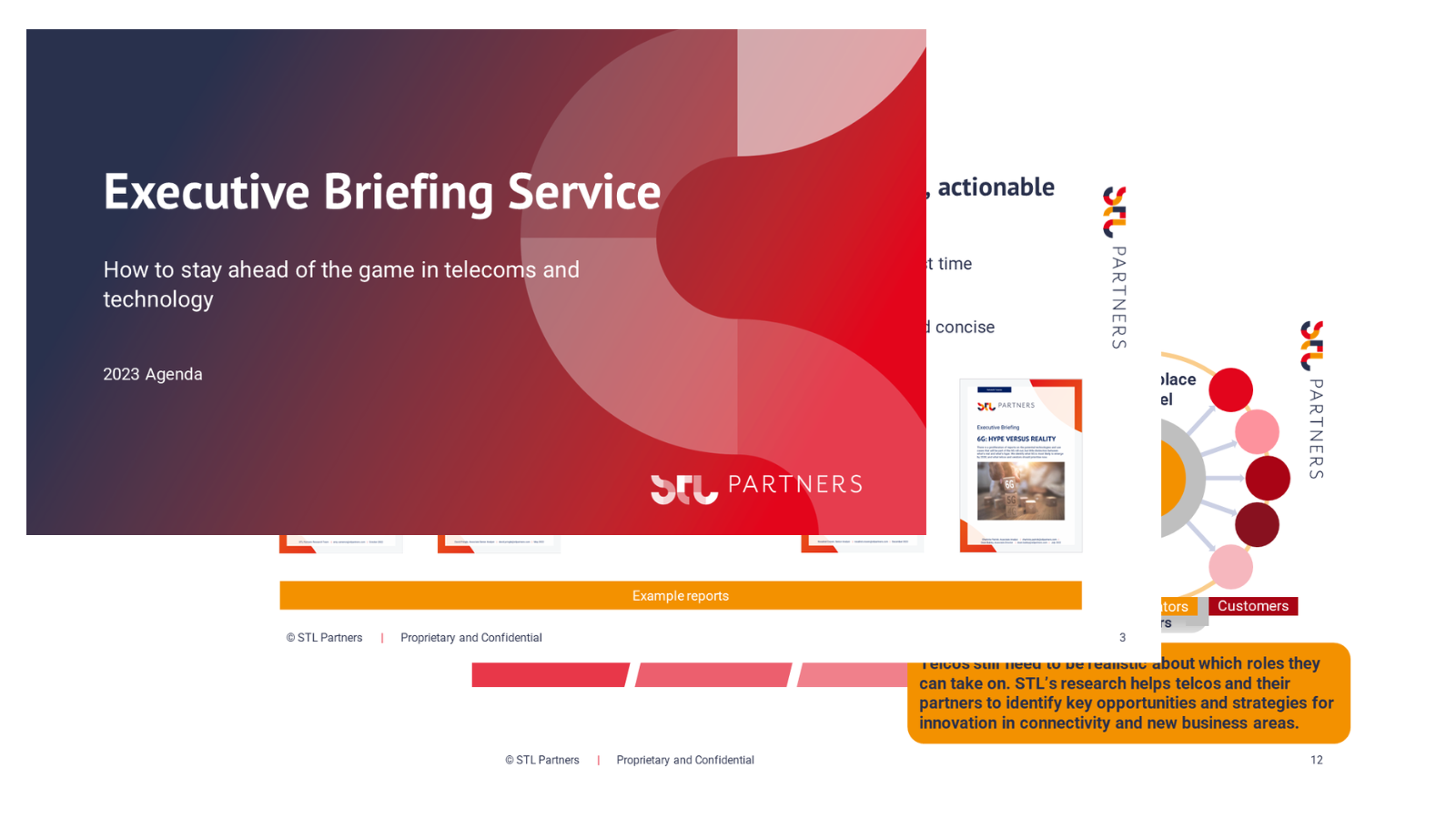
What does the semiconductor shortage mean for telecoms?
Telecoms semiconductor demand is beginning to outstrip supply
Digital acceleration since COVID-19 has brought about a surge in demand for semiconductors across most sectors including telecoms, which is in the process of rolling out 5G, deploying cloud network functionality, cloud services and by extension, connecting volumes of IoT devices that previously did not have connectivity or require sophisticated integrated circuits (IC) i.e. chips.
This boom in consumer and business demand, combined with COVID-19, geopolitical tensions, and other disruptions (furloughing, weather, accidents) to the supply chain have all contributed to shortages in a sector where the supplier/vendor ecosystem is highly interdependent. Semiconductor chip production requires large investments in R&D and building fabrication plants, specialist knowledge and intellectual property, as well as specialist manufacturing equipment and raw materials.
While shortages are said to be limited to certain categories of semiconductor, it is estimated that the situation will continue in the production chain into 2022 and 2023 until foundry capacity, substrates and component demand softens out.
The ongoing semiconductor supply crunch has the potential to disrupt inventories for production of smartphones, routers and IoT devices, which in turn could impact device sales and service revenues for telecoms operators.
So far, media reports have focused mainly on the current semiconductor shortage in the auto industry where car manufacturers halted production for extended periods over 2021 due to a lack of chip component supply. In May, it was estimated the auto industry would lose $110bn in sales due to production being hampered by shortages.
This has been partly attributed to semiconductor producers focusing on higher margin chips to meet a more stable and consistent customers such as the electronics sector and de-prioritising less stable and more inconsistent customers such as the auto sector, which initially pulled orders on the outbreak of COVID-19. However, much of the supply constraint is more pronounced on specific manufacturing nodes where there is demand from multiple sectors such as telecoms, electronics and autos, with further potential shortages across all these sectors should demand continue to exceed supply.
TrendForce, a semiconductor research specialist, attributed record Q1 2021 foundry revenues to increasing wafer prices and to foundries adjusting their product mixes to ensure profitability – essentially focusing on more profitable / premium semiconductors and meeting the semiconductor needs of more reliable and profitable sector customers.
The graphic below shows how semiconductor components required for smartphones is roughly even across chip categories and the telecom sector is just as vulnerable to shortages in discrete, analog and other (optoelectronics) DAO semiconductors as the auto industry.
Semiconductor sales by category across sectors

Source: BCG & Semiconductor Industry Association report: Strengthening the Global Semiconductor Supply Chain in an Uncertain Era – April 2021
Stockpiling is amplifying the supply shortage
Apple is an example of how demand for consumer products is impacting component supplies. The company is one of the pandemic winners in terms of sales revenue and has experienced a boom in demand for its Mac, iPad and 5G iPhone, which launched in late 2020. The company’s Q1 2021 revenue increased 54% to $89.6bn and its iPhone sales increased 66% to $47.9bn – effectively 54% of all revenues in Q1 2021. Part of this success has been achieved through its ability to avoid shortages by stockpiling critical components.
Up until now, many sectors including telecoms have been able to shelter themselves from shortages by advance ordering and stockpiling. Susquehanna Financial Group’s ongoing trend research on the lead time between ordering a chip and taking delivery illustrates the extent of the supply situation, where in July 2021 the lead time increased to 20.2 weeks up from 17 weeks in April.
- Susquehanna points in particular to the increase by four weeks in April (to 23.7 weeks) for power management integrated circuits (PMICs) which regulate power to devices and various telecoms equipment.
- At Apple’s Q3 2021 results, Tim Cook said he expected supply constraints for both the iPhone and iPad in the quarter for September to be greater than the previous (June) quarter due to constraints on silicon with legacy nodes, although there was no issue with supply from the latest nodes.
Stockpiling is contributing to lengthening chip delivery schedules

Source: Bloomberg, Susquehanna Financial Group data
Both Susquehanna and Bloomberg analysis suggest the increasing lead time gap is an indicator of buyers committing to future supply orders in order to avoid shortages down the line, but also evidence of stockpiling and over ordering which further exacerbates the situation.
And the practice continues. with the CFO of semiconductor producer Taiwan Semiconductor Manufacturing Company (TSMC) in July (Q2 2021) noting that its customers and the supply chain in general will “gradually prepare higher levels of inventory in the second half of the year [2021] as compared to the historical seasonal level given the industry’s continued need to ensure supply security following supply chain disruptions due to COVID-19 and uncertainties brought about by geopolitical tensions”.
Future outlook: Can the semiconductor industry meet growing telecoms demand?
The situation has the potential to impact the telecommunications industry where there are shortages of semiconductors in areas such as power management, memory, and screen display for telecommunications equipment. In April 2021, Bloomberg reported broadband providers (ISPs) were facing delays more than a year on internet router orders with carriers been quoted twice the normal order lead time of up to 60 weeks. The potential lack of supply of broadband routers could for example impact ISP broadband subscription sales/upgrades.
KPMG’s Q4 2020 industry survey of 156 semiconductor senior executives highlighted the categories where chips would be in most demand in 2021, with the top three being:
- Sensors/MEMS (microelectromechanical systems) – where IoT applications and automotive are seen as the top growth categories.
Consumer and industrial IoT remain ongoing growth drivers for semiconductors with low power IoT devices (wearables, hearables, health monitoring) continuing to grow in demand. Smart homes also drive growth in connectivity and sensor categories as demand rises for smart speakers, cameras and presence monitoring applications such as heat and motion detection, smart energy consumption and room occupancy. eSIM penetration is also expected to be heavily driven by the automotive sector (see STL Report eSIM: How to break through the barriers), while security is also expected to rise in prominence across all IoT devices.
Advanced vision sensing will be increasingly required for facial recognition, computational photography, long range scanning, augmented reality and robotics. In July 2021, Semiconductor Engineering highlighted a shortage in CMOS image sensors, which enable camera functions for cars, smartphones, security cameras, and industrial/medical systems, assisting also in computational photography and augmented reality applications.
Application areas of semiconductor demand

Source: KPMG report; Surviving the silicon storm 2021
2. Analog/radio frequency (RF) / mixed signal (SoC) – Semiconductor Engineering highlighted shortages in areas such power management integrated chips (PMIC) and display driver integrated chips (DDIC) in July 2021. PMICs manage flow and direction of power in products such as smartphones as well as wearables and hearables. PMIC are also critical for PCs and servers.
In terms of power demands, the shift to 5G brings with it large increases in data and computing power, and with it an increase (densification) in base station antenna across multiple locations requiring connectivity, power and sensors.
5G (and 4G) smartphone penetration will also continue to drive demand for semiconductors well into 2022. While smartphone sales contracted in 2020 during lockdown, IDC reports a rebound in shipment volumes up 13.2% in Q2 2021 (y-o-y) as consumers transition to the latest 5G handsets. The PC market also remains strong despite the expectation that demand will ease as people return to work.
Susquehanna’s May 2021 research highlighted power management lead times of 23.7 weeks in April, an increase of four weeks on the previous month, however in August research indicated a reduction in lead times for power management chips. DDIC manage power to flat-panel displays such as liquid-crystal displays (LCDs) and organic light-emitting diodes (OLEDs). The shortages are impacting automotive, PCs, smartphones, TVs and industrial equipment. Flat-panel displays are also in increasing demand in the automotive sector.
A recent Financial Times highlighted how the constraints in OLED supply impact smartphone profit margins. The EU’s drive for a common charging port such as USB-C is also expected to drive demand for USB controllers for suppliers such as Infineon.
Power and sensor semiconductors are in high demand for 5G networks

Source: Infineon Q2 2021
3. Microprocessors (including GPU/MCU/MPU) to support ongoing cloud (data centre) and virtualisation applications.
Cloud computing (server) requirements have increased further as people have shifted to fully or partially working from home. Hyperscalers such as Amazon, Microsoft and Google continue to make considerable investments in cloud infrastructure and platforms that also aim to support network operators. Semiconductor Engineering (July 2021) and Susquehanna Financial Group research highlighted shortages in microcontroller MCUs which integrate CPU and memory on the same chip and are used across cars, communications equipment, appliances and industrial equipment. Semiconductor Engineering also noted comments from the CEO of Tokyo Electron that DRAM (flash short term memory) supply was also “tight due to higher 5G mobile, PC, and data center demand”. Smartphones such as the 5G iPhone 12 for example come with 4GB DRAM.
Semiconductor market risks to watch
Semiconductor producers include fabless companies (such as Qualcomm, Broadcom, NVIDIA, AMD) which mainly innovate and design semiconductor chips and outsource manufacturing production to foundries such as TSMC, Samsung and SMIC.
Integrated device manufacturers (IDMs) such as Intel, Infineon and Samsung design and manufacture their own chips. Samsung is an IDM but also operates a foundry business. Although Intel is now entering the foundry business with investments announced in the US.
Some semiconductor companies are also fab-lite producing some but not all their own semiconductors and relying on foundries for production. The final production stage of assembly and test can be carried out by the foundry or by outsourced semiconductor assembly and test (OSAT) vendors.
In the foundry market, TSMC holds 54% market share and reported revenues of $12.9bn in Q1 2021 according to TrendForce (up 2% quarter-on-quarter).
- Of TSMC 2020 revenues, only 3% came from automotive chips, while 48% come from smartphones, 8% from IoT and 33% from high performance computing (HPC) chips (CPUs GPUs, NPUs, AI accelerators for PCs, tablets, game consoles, servers, and base stations)
Commenting on the shortage situation in its Q2 2021 analyst call, TSMC acknowledged the challenges caused by a structural increase long-term market demand as well as the short-term imbalances in the supply chain caused by COVID and geopolitical tensions. While the foundry does rule out an inventory correction in future, the CEO confirmed that he expected capacity to remain tight throughout this year and extend at least into 2022. TSMC believes even if an inventory correction were to occur the strength in demand for 5G and HPC applications means the downturn will be less volatile.
TSMC 2020 revenue by platform

Market concentration but global interdependencies
The semiconductor production and business model varies across semiconductor domains and over the last 20-30 years, specific semiconductor markets have become concentrated and specialised with vendors across the entire value chain possessing deep R&D and process knowledge in specific product market areas. A recent report from Stiftung Neue Verantwortung (SNV) highlighted just three players – Samsung, SK Hynix and Micron – holding 95% market share of DRAM (flash short term memory) in 2019 compared to eight players in 2005. However, because analog integrated circuits (ICs) tend to depend on domain expertise and are designed for specific tasks in specific market sectors, the analog chip market is much less concentrated than the memory chip and processor market, where 10 prominent analog producers held 62% market share in 2019.
While Asia is a dominant region for manufacturing, when taking the entire semiconductor value chain into perspective, SNV highlight interdependencies do exist between different geographic regions (across design and IP, manufacturing equipment for fabrication, wafers, chemicals and assembly). According to SNV “today’s ICT systems depend on DRAM from South Korea, NAND from Japan, analog chips from the United States and IP from Europe. No country currently has the entire production stack in its own territory. Instead, the semiconductor value chain relies on collaboration and trade between the United States, Taiwan, South Korea, Japan, Europe and China.”
However, the combination of the current shortage with geopolitical tensions has resulted in governments stepping up efforts to ensure security of supply such as CHIPS for America Act and actions in Europe, China, India, Japan and South Korea.
In June the semiconductor trade body SEMI reported construction for 19 new high-volume fabs would begin by the end of 2021 and chip manufacturers would break ground on another 10 by the end of 2022. The equipment spend on the 29 fabs is set to exceed $149bn.
- Adding semiconductor capacity requires significant upfront costs. According to SNV, a modern fab costs in excess of $15bn while the business model and profit margin varies across semiconductors.
- TSMC is investing $100bn over three years in new production including a facility in the US while South Korea’s Samsung Electronics and SK Hynix is investing $442bn in R&D and production between now and 2030 as part of a national government effort in this area.
Highlighting the value of free trade in the sector – semiconductors are the world’s fourth most traded product – the Semiconductor Industry Association estimate the cost of self-sufficiency where each region meets its own needs would require at least $1tr in investment and a rise in semiconductor prices of between 35% and 65% for end users/consumers.
Semiconductor supply chain based on geographic specialisation

Geopolitics impact on supply chain
The US-China trade war has also impacted semiconductor supply. In September 2020 the US commerce department mandated that US suppliers of selected equipment to the Chinese chip maker Semiconductor Manufacturing International Corporation (SMIC) apply for export licenses following the department’s determination that the equipment could be used for military purposes. In December 2020, SMIC was one of 70+ companies added to an Entity list denying it licensed access to US technology, in effect, preventing SMIC from producing semiconductors at advanced technology levels 10 nanometers or below. (SMIC is the largest Chinese semiconductor manufacturer in China and the fifth largest in the world holding 4% of the worldwide foundry market share in 2020 according to TrendForce.)
Companies relying on Chinese semiconductor suppliers such as SMIC were required to find new (foundry) suppliers such as TSMC that produce similar chips. Suppliers to the automotive sector must ensure their components meet regulatory safety standards which further narrows sources of supply for automakers.
Supply chain issues
Global shipping continues to be an issue across many sectors of the economy as shortage fears lead to over ordering of supplies across many sectors, which in turn contributes to container shortages (as containers are used for temporary storage). This combined with staff furloughing has created bottlenecks across global supply chains.
The fear of shortages itself became a self-fulfilling prophecy as companies fearing shortages (due to high demand, Brexit, upcoming US trade embargos) over ordered and stockpiled inventory to ensure supplies.
- Even Chinese companies such as Huawei, SMIC built up stockpiles in anticipation of facing trade embargos. In Q1 2021 SMIC revenue increased by 12% quarter-on-quarter to $1.1bn. TrendForce noted in May the company continued to operate normally despite being placed on the entity list because it built up a high inventory level of input production materials and equipment parts before being designated by the US.
- Nevertheless, in September 2021 Huawei releases its latest P50 smartphone with no 5G chipset, resorting to 4G and Wi-Fi 6 connectivity instead due to the ongoing sanctions and lack of 5G chipsets. The company was the first to launch a 5G handset in 2019.
Speaking at JP Morgan Conference in May 2021, John Stankey of AT&T commented “if there’s anything that I kind of sit back in and worry about a little bit, I’ve mentioned it before, supply chains are stressed in a way I’ve never ever seen. And it doesn’t matter whether you need pool equipment for your home, broadband routers for your customers or connectors, everything seems to be in short supply and kind of hand to mouth. And that worries me at times because as we’re stepping up investment and we’re doing things like going to a new air interface on 5G, just like a particular chip that needs to be in a dashboard of a car needs to show up on time, we need the same thing. And I think it maybe still a little bit rocky on parts and places.”
Stankey’s remarks highlight the supply chain constraints faced by one of the largest telcos in the world with significant buying power compared to smaller telecom players, which may face greater delays or be less able to absorb rising costs.
Download this article as a PDF
Read more about telecoms strategy
Executive Briefing Service overview pack
Our overview pack summarises the key agenda for CxOs and those driving growth in telecoms and technology
AI compounds the telecoms talent conundrum
Securing AI skills was on the minds of telcos at MWC 2024. Telcos have plans in place to address the shortfall, but will these be sufficient to deliver the necessary in the near term?
Telcos versus Techcos: Who is winning the battle of strategic capabilities?
STL Partners has conducted a significant study to benchmark the skills we consider critical for success in the future. Here is a summary of our high-level findings.
Telecom KPIs: What do they say about the industry
STL Partners investigates the strategic objectives and associated metrics telcos report on: Do telcos still reference the same performance metrics? Or are they reflecting industry change? How are telcos taking stakeholders with them on their change journeys?





